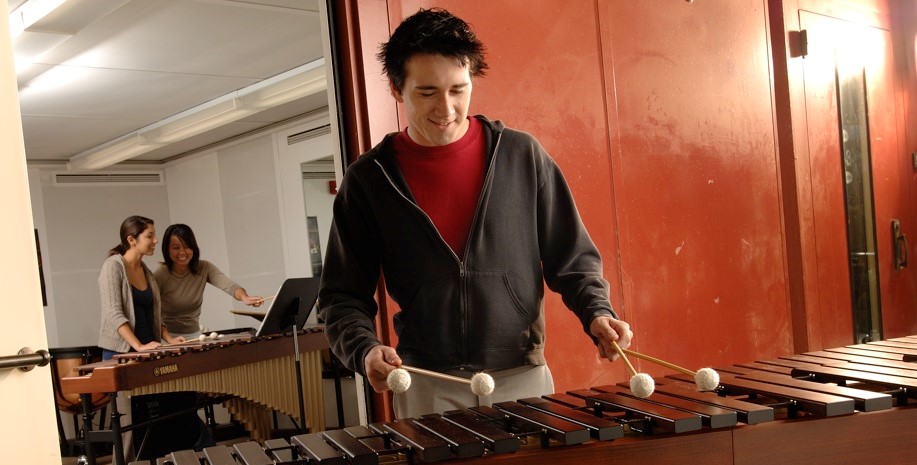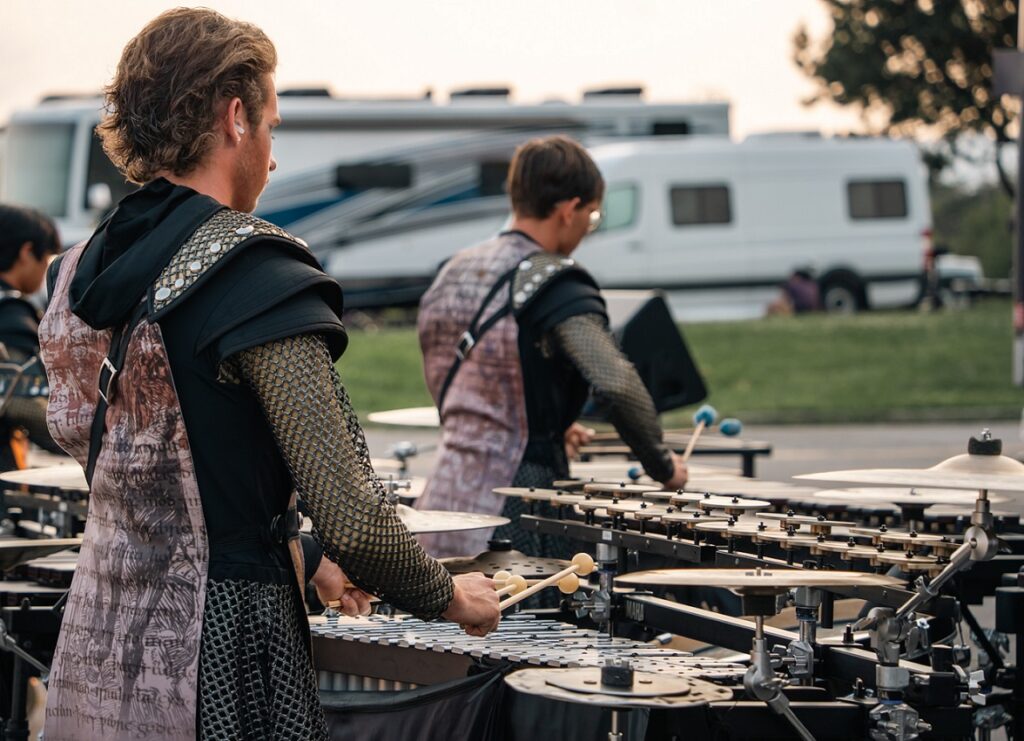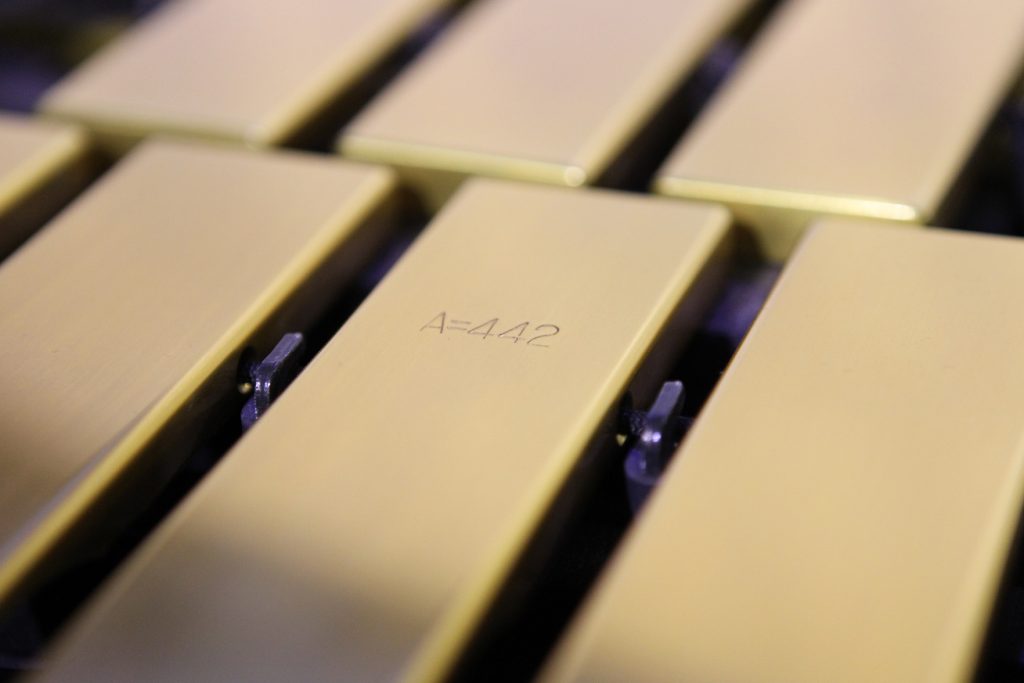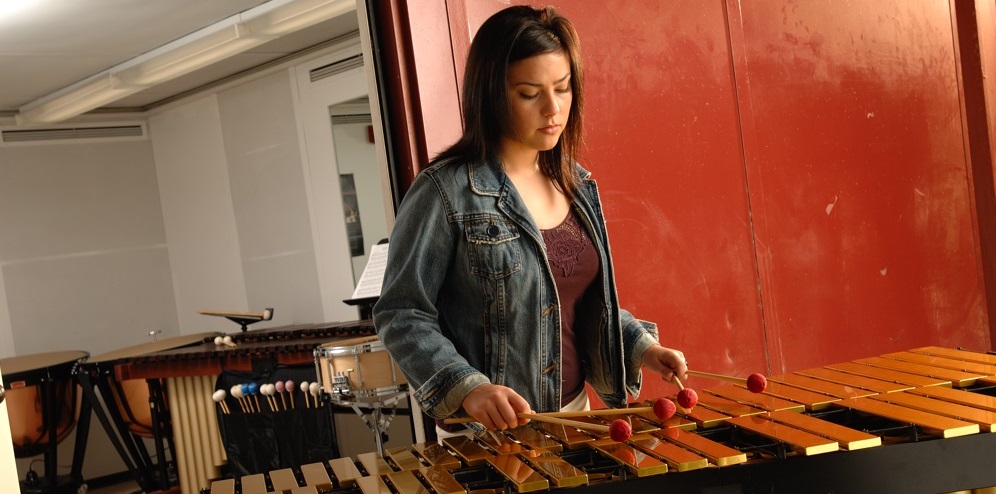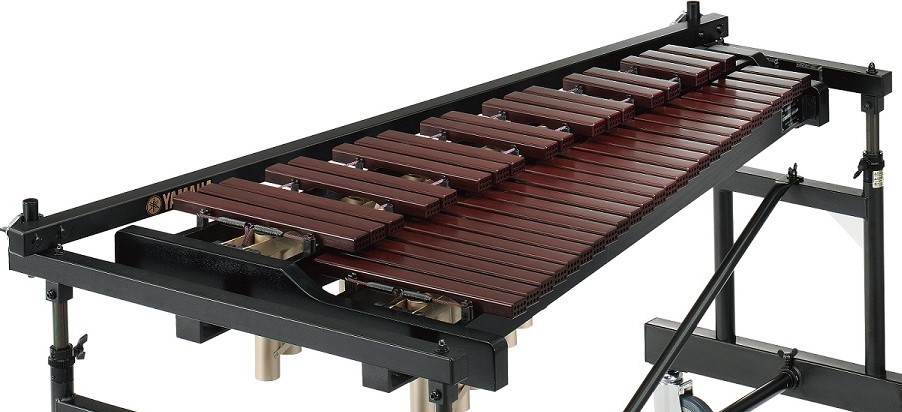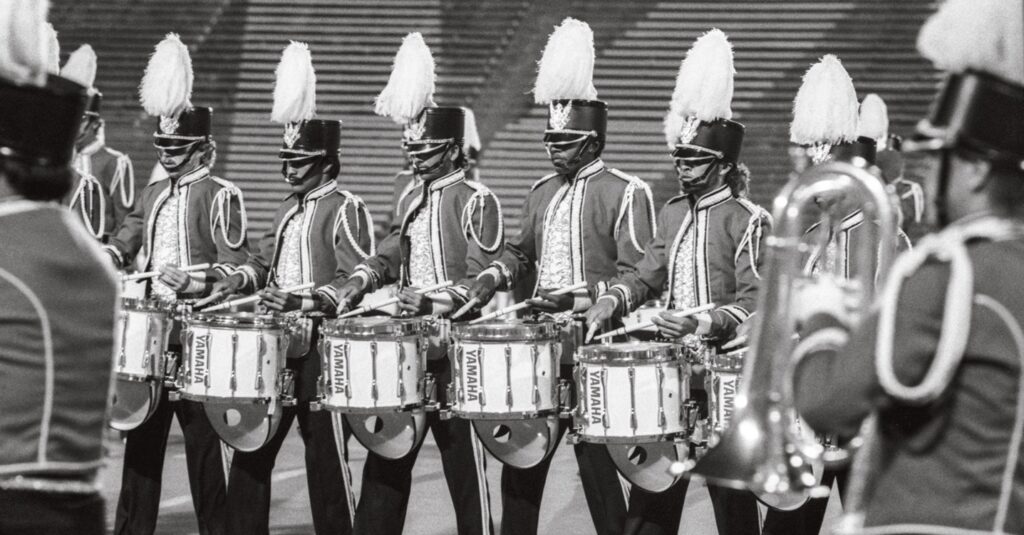Tagged Under:
6 Strokes for Front Ensemble Warm-Ups
Develop an effective warm-up exercise sequence for marimbas, vibraphones, xylophones, timpani, drum set, glockenspiel and more.
Marimbas, vibraphones and xylophones — OH MY! The modern-day front ensemble consists not only of these well-known percussive keyboard instruments, but also the glockenspiel, timpani, drum set, synthesizer and a range of auxiliary percussion instruments. Since its inception and over the past four decades, the front ensemble has evolved into a crucial part of marching band, indoor drumline, and drum corps productions, often providing supportive and even featured melodic, harmonic and electronic material. When considering the implementation of the front ensemble in your percussion and band programs, you must consider which exercises and pedagogical philosophies to employ.
Double Stops
A logical first exercise for your warm-up sequence is one that addresses basic double-stop motions. In the world of percussion, a double stop occurs when both mallets or sticks strike the instrument at the same time. One of the most common double-stop exercises popular among today’s front ensembles is called “Shifts.”
Shifts is a scale-based exercise, which means it can be transposed into any other key. It can be performed in a circle or multiple circles to extend the rep to the desired length. For instance, the instructor could call for “Shifts, Minor Scales, Circle of 4ths” as a way to increase the demands of the repetition.
In regards to its name, the exercise works on “shifting” quickly from note to note, emphasizing the importance of stroke efficiency. By performing this exercise using multiple scale-types and circles at the start of each warm-up sequence, instructors can help students mentally acclimate to the demands of the rehearsal. The music for Shifts is included below in C major, including parts for timpani and synthesizer. The final 2/4 included at the end is for connecting multiple scales together.
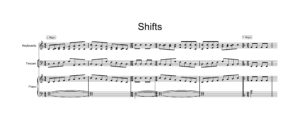
Download Shifts.
Alternating Strokes
Once the appropriate double-stop stroke has been established, it’s time to address the alternating stroke technique. This sequence is performed similarly to double-stops except that the strokes are performed one after another rather than at the exact same time. Acknowledging that many front ensemble arrangements contain rhythmically dense, often fast, scale-based melodic passages, the alternating stroke technique deserves specific attention during warm-up. For many decades, keyboard players and front ensemble performers have utilized the works of 1920s xylophone-extraordinaire George Hamilton Green. Inspired by the hundreds of exercises published in Green’s most notable work, “Instruction Course for Xylophone,” these exercises have come to be known as “Green Scales.” An example of the structure of the typical “Green Scale” is provided below, with suggestions for timpani and synthesizer parts included.
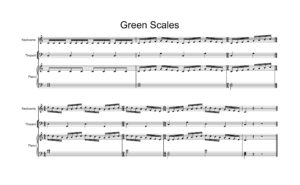
Download Green Scales.
Want to expand beyond the simplicity of Green Scales, which is geared toward beginner and intermediate groups? Options are available for more advanced ensembles. My personal favorite alternating stroke exercise, “Yellow” (a nod to the G.H. Green himself), is provided below. Notice the additional groupings of notes — patterns of 3, 4, 5 and 6 — and the particularly challenging final descending passage.
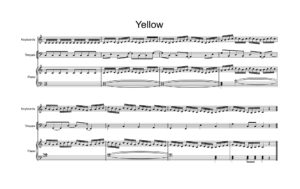
Download Yellow.
Double Vertical Strokes
As the front ensemble evolved throughout the 1980s, 1990s and early 2000s, the implementation of four-mallet keyboard technique became more popular and eventually became universally applied to large majorities of front ensemble curriculums internationally. The increased use of four mallets introduced a wider range of textures, skillsets and sonic contributions. The most common four-mallet stroke type is called the “Double Vertical Stroke,” or “block chords,” which require striking all four mallets at once. Building the appropriate muscle groups to develop this unique stroke is an important step in any modern front ensemble warm-up sequence. A simple block chord exercise that starts on Cs and Gs and moves up chromatically is provided below.
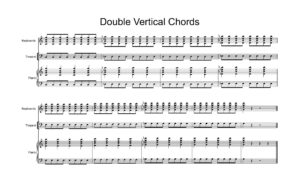
Download Double Vertical Chords.
Single Independent Strokes
The next common stroke type to be addressed is the single independent stroke, which is when only one mallet in each hand strikes a note at any given time. These strokes can be practiced in a variety of combinations using the same chords in the “Double Vertical Chords” exercise provided above by replacing the four-note chords with two-note chords. Simply play two mallets at a time rather than four, followed by the remaining two mallets.
At this point, let’s go over how mallets are referred to based on their placement in the hands. The mallet farthest to the left is known as mallet 1, and its left-hand counterpart is known as mallet 2. The mallet farthest to the right is known as mallet 4, and its right-hand counterpart is known as mallet 3. Due to their outward nature in each hand, mallets 1 and 4 are known as “Outer Mallets” and mallets 2 and 3 are the “Inner Mallets.” Therefore, possible mallet combinations for practicing single independent strokes would be: 13-24, 14-23, 24-13 and 23-14. A one-measure example of each of these combinations is provided below using the first chord of the “Double Vertical Chord” exercise described in the previous section.

Download Single Independent Strokes.
Single Alternating Strokes
We’ve covered two basic four-mallet stroke types, so now it’s time to explore the next level of complexity. Going from single independent strokes to single alternating strokes can be achieved by simply switching which hand is engaging the mallets at any given time. Therefore, the stroke type remains relatively the same, with the added caveat that no two mallets play together at the same time. For this reason, our permutative possibilities expand with the introduction of this new stroke type: 1-3-2-4, 1-4-2-3, 4-2-3-1-, 4-1-3-2, 2-4-1-3, 2-3-1-4, 3-1-4-2, 3-2-4-1. Each permutation is provided in a 1-beat example below.

Download Single Alternating Strokes.
Double Lateral Strokes
The last of the four major four-mallet stroke types is the double lateral stroke, which occurs when one hand plays two mallets back-to-back. Permutative possibilities are: 1-2-3-4, 3-4-1-2, 4-3-2-1, 2-1-4-3, 2-1-3-4, 3-4-2-1, 1-2-4-3, 4-3-1-2.

Download Double Lateral Strokes.
Including Auxiliary Players
Many front ensembles enlist younger, still developing members to perform on multiple-percussion set ups called “auxiliary percussion” or “rack,” which provide a variety of orchestral percussion sounds to the overall musical production. While these performers have important roles in the ensemble, they can easily be overlooked when not actively engaged during the warm-up process.
I recommend pairing these percussionists on the larger keyboard instruments (I suggest marimba) with more experienced players. Another option is to write out “drum-set” style counterparts for them to coincide with different front ensemble warm-ups. A setup like this would allow these players to move their hands percussively in time with the rest of the ensemble and give them the opportunity to contribute to the sonic landscape of each warm-up.
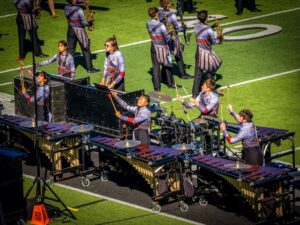
Advanced Techniques and “Lot Tunes”
The seven exercises provided in this article are meant to serve as a starting point for any music educator who wants to develop an effective front-ensemble warm-up sequence. A long list of advanced techniques can be explored in addition to these exercises as your group begins to master the fundamentals and are ready for something more challenging. Many of the industry’s well-known music publishers have workbooks that contain front-ensemble exercises with a wide range of difficulty levels. In addition to the common exercises, many front ensembles will conclude their warm-up sequence with a “lot tune.” These lot tunes often exist in the form of front-ensemble arrangements of pop songs on the radio and provide an opportunity for ensembles to transfer the fundamentals practiced in the traditional exercises to a more audience-accessible musical performance.
Front ensembles have come a long way since their inception in the early 1980s. There are many exciting techniques to be explored in the daily warm-up sequence, and there are certainly many different ways to approach them! I hope this article will serve as a starting point for those wishing to develop a thoughtful and effective exercise routine for their ensemble.










